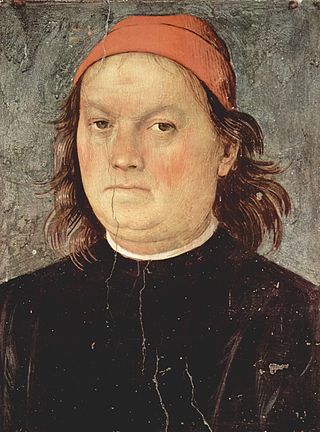Sicily
Province of Caltanissetta
- 17th century, cycle of paintings recorded inside the Palazzo Branciforti in Mazzarino.
Province of Catania
Catania
From the Giovan Battista Finocchiaro collection in the Museo civico al Castello Ursino:
- Death of Cato
- Suicide of Seneca
- Death of Brutus
- Crucifixion of St Peter
- Tobias Healing his Blind Father
- Christ Mocked (I)
- Christ Mocked (II)
Linguaglossa
- oil on canvas recorded in the Dominican 'aggregato'
Province of Messina
Messina
- 1646 – 1649, Scaevola before Lars Porsena, Museo regionale di Messina.
- 1646 – 1649, Adoration of the Shepherds, Museo Regionale di Messina.
- 1646 – 1649, St Cecilia, recorded in the city's Capuchin monastery church.
Other
Province of Palermo
Caccamo


- 1641, Miracle of St Isidore the Laborer, oil on canvas, originally in the church of Sant'Agostino, stolen and recovered, now in the duomo di San Giorgio Martire.
Palermo
- 1638 – 1639, Flagellation, Oratorio del Rosario di San Domenico. [1]
- c. 1638 – 1639, Christ Crowned with Thorns, attributed, Oratorio del Rosario di San Domenico.
- 1639, The Stoning of St Stephen, oil on canvas, palazzo Alliata di Villafranca. [2] [3]
- 1639, The Tribute Money or Miracle of the Tribute Money, oil on canvas, commissioned for the palazzo Alliata di Villafranca and recorded in the seminario arcivescovile. [2] [3]
- 1646 – 1649, Man Blowing on an Ember , recorded in the Ruffo collection in Messina, now in the Galleria Regionale in palazzo Abatellis.
- Christ with the Doctors in the Temple and Jacob and Esau, recorded in Antonio Lucchesi-Palli's collection in Palazzo Campofranco. [4]
Monreale
- 1640 – 1650, Last Supper, recorded in the sacristy of the basilica abbaziale di San Martino delle Scale. [5]
- 1646, Adoration of the Shepherds, commissioned and recorded in the Capuchin monastery church, now in the city's palazzo.
- 17th century, St Dominic of Silos, recorded in the collegiate church of Santissimo Salvatore.
Province unknown
- c. 1635, Isaac Blessing Jacob















